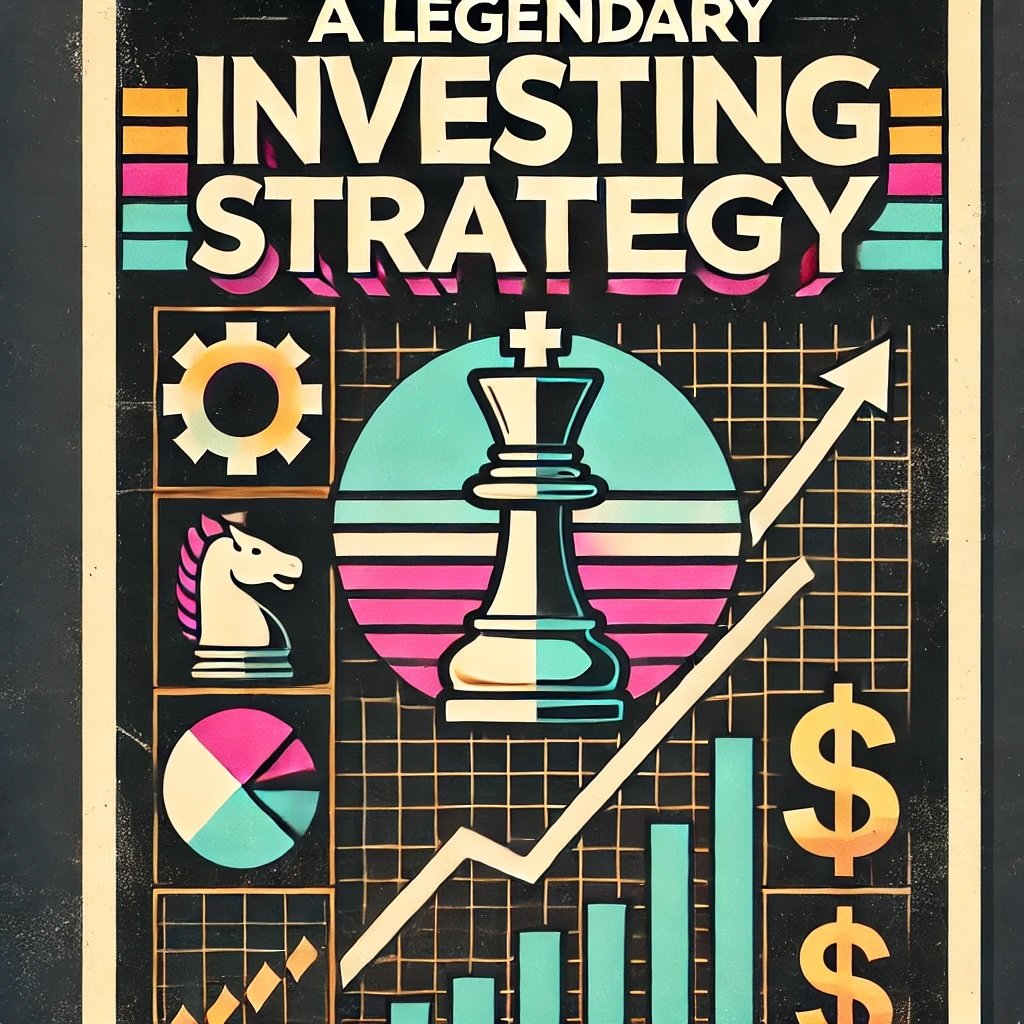From the epic Roman landowner who spread his riches between vineyards, farmland, and gold, to today’s savvy tech investor diversifying into stocks, cryptocurrencies, and real estate, humans have long recognized the wisdom of not putting all their eggs in one basket. This timeless philosophy is captured in the modern investment world through the concept of asset allocation.

Asset allocation is essentially the art and science of spreading your investments among different types of assets such as stocks, bonds, real estate, cash, and others, to optimize the balance between risk and return. It’s a bit like creating the perfect recipe for a financial feast: the right mix of ingredients (assets) can result in a palatable dish (investment portfolio) that suits your taste buds (risk tolerance and financial goals).
If you’re a high net worth individual (HNWI), mastering the art of asset allocation is like owning a golden key to the kingdom of financial security and prosperity.

Golden Key To Kingdom Of Financial Freedom
With more wealth comes greater exposure to market volatility and economic shifts, as well as a heightened need for tax efficiency and estate planning. So, your asset allocation decisions play a significant role in preserving and growing your wealth, while also ensuring you can pass it on to future generations as efficiently as possible.
Moreover, it’s not just about the dollars and cents. High net worth individuals often have a vision that extends beyond mere wealth accumulation. Whether you’re eyeing philanthropic endeavors, creating a lasting legacy, or financing ambitious business ventures, a well-structured asset allocation strategy can serve as the foundation to achieve these lofty goals.
In essence, asset allocation is more than just a cog in the wheel of investment strategy for high net worth individuals—it’s the engine that drives long-term wealth creation and management, providing the cushion to absorb financial bumps, the fuel to seize new opportunities, and the roadmap to realize your financial dreams. So, as we venture further into this topic, remember: for a high net worth individual like yourself, understanding and effectively implementing asset allocation isn’t just a smart move—it’s an essential one.

Understanding High Net Worth Individuals
Let’s roll out the red carpet and illuminate the concept of a High Net Worth Individual. While there isn’t a universally accepted gold-standard definition, in the world of finance, the term ‘High Net Worth Individual’ typically refers to a person who owns investable assets (excluding personal assets like primary residence) exceeding one million dollars. When you start considering individuals with investable assets over $30 million, they get promoted to a higher league, often dubbed ‘Ultra High Net Worth Individuals’. Pretty lavish, right?
However, being a HNWI isn’t just about the glamour, private jets, and high-end soirées. It’s about responsibility, intelligent financial management, and the impact you can make with your wealth. It’s about understanding the weight your financial decisions carry, and the ripple effect these can have on your family, society, and perhaps even the world.

Unique Investment Concerns and Opportunities for HNWIs
As a HNWI, you have the luxury of dipping your toes into investment waters that might be out of reach for others. This includes opportunities like hedge funds, private equity, commercial real estate, art, and more. It’s a bit like having an all-access VIP pass to the investment concert. But with the privilege comes complexity.
HNWIs face unique investment concerns. Volatility in global markets can cause significant fluctuations in their wealth. They need to consider the impact of taxes on their investment gains more closely, given their higher tax brackets. Estate planning becomes vital, especially if they wish to leave a financial legacy for future generations. Also, philanthropic commitments often play a big role in their financial planning. These unique concerns require astute financial strategies, including, you guessed it, well-thought-out asset allocation.

Overview of Financial Goals Commonly Held by HNWIs
Financial goals for HNWIs are as diverse and unique as the individuals themselves. They can be as grand as funding a rocket trip to Mars or as grounded as ensuring a robust financial future for their loved ones. However, some common themes emerge among these goals.
Preservation of wealth is often a key priority – the focus is less on becoming rich and more on staying rich. This is closely followed by growth, where HNWIs seek to increase their wealth strategically, ensuring their money works as hard as they do.
Many HNWIs are keen on creating a lasting legacy, whether through their business ventures, philanthropic endeavors, or providing for future generations. Thus, estate planning and charitable giving strategies become crucial.
Lastly, with wealth often comes a desire for financial independence and the freedom to pursue passions, be they yachting around the world, collecting fine art, or bankrolling promising startups.
Understanding these goals is like reading the compass that guides the asset allocation strategies for HNWIs. This is not just about finance. It’s about aligning wealth with values and vision, and that’s what makes the journey of asset allocation for HNWIs not only intriguing but also deeply personal and fulfilling.
source: Neil Jesani Wealth Management, LLC on YouTube

Fundamentals of Asset Allocation
Asset allocation is akin to a grand orchestra, where each instrument—or in our case, asset class—plays a unique role in creating a harmonious financial symphony. Let’s dive into some of these key asset classes:
- Stocks: Often considered the rockstars of the investment world, stocks represent a share in a company’s ownership. They have historically provided relatively high returns, but with the caveat of increased volatility. It’s like a thrilling roller coaster ride, filled with highs and lows.
- Bonds: If stocks are the rockstars, bonds are the soulful crooners. They are essentially loans made by an investor (you) to a borrower (typically a corporation or government). Bonds tend to provide steady, albeit lower, returns and serve as a calming influence in your portfolio.
- Cash Equivalents: These are the tambourine players. They might not be the loudest, but they provide stability. Think of assets like money market funds or treasury bills that can be quickly converted into cash. They yield modest returns but provide a safety net and liquidity.
- Real Estate: Considered the ‘cool jazz players’ of the investment world, investing in property, whether directly or through Real Estate Investment Trusts (REITs), offers a tangible asset that can provide both income (rent) and capital appreciation.
- Private Equity: This is like investing in a promising underground band before they hit the big time. Private equity involves investing directly into private companies, offering high potential returns, but also greater risk and less liquidity.
These are just a few of the players. There are other alternative investments like hedge funds, commodities, and even cryptocurrencies. The key is understanding each player’s role and how they can work together in harmony.
Importance of Diversification in Minimizing Risk and Maximizing Return
Diversification is like adding a variety of spices to a dish to enhance the overall flavor—it reduces the risk of the overall meal (portfolio) being spoiled if one ingredient (asset) doesn’t taste as expected. By investing across different asset classes, sectors, and regions, you can mitigate potential losses if one area underperforms, with the hope that others will perform well.
While it doesn’t guarantee profits or protect completely against loss, diversification can provide a degree of comfort in unsettling markets. It’s about striking the right balance between risk and reward—a diversified portfolio can weather the storms and bask in the sunshine of financial markets.
Determining Risk Tolerance and Investment Horizon
Understanding your risk tolerance is like knowing how much spice you can handle in your meal. Are you the daring type who savors a high heat dish, embracing the potential for high returns with an equally possible serving of loss (high-risk tolerance)? Or do you prefer a more mild, less adventurous investment journey, favoring stability and preservation over high returns (low-risk tolerance)? Perhaps you’re somewhere in the middle, enjoying a bit of a kick but not too much (moderate risk tolerance).
Risk tolerance isn’t a static concept—it can change based on your life stage, financial position, and personal disposition. Aligning your portfolio with your risk tolerance is crucial for maintaining a comfortable investment journey.
Your investment horizon, or the expected time frame for holding onto your investments, is another important consideration. Are you in it for the long haul, or are you looking for quicker returns? A longer investment horizon typically allows more time to recover from potential short-term losses, potentially allowing for riskier investments.
By combining an understanding of the different asset classes, the power of diversification, and a clear assessment of risk tolerance and investment horizon, you can orchestrate an effective asset allocation strategy.

Advanced Asset Allocation Strategies for HNWIs
Let’s start with a profound but simple truth: even the highest net worth can’t control the markets. However, savvy HNWIs know they can counteract the whims of financial weather by carrying a diversified financial umbrella. And I’m not talking about the ordinary umbrella that covers only stocks, bonds, and cash equivalents.
For HNWIs, diversification takes a more global and sophisticated approach. It’s akin to assembling an international culinary feast that includes various dishes from around the globe. Not only does the portfolio feature a mix of asset classes but also includes a geographical spread that crosses borders. This strategy mitigates the risk that comes with economic changes in any one country or region, ensuring you are not overexposed to a single economy’s highs and lows.

The Role of Alternative Investments (Cryptocurrencies, Hedge Funds, etc.)
In the adventurous world of HNWIs, venturing off the beaten path can be part of the thrill. Enter alternative investments: the exotic spices of your financial feast. They include everything from cryptocurrencies like Bitcoin and Ethereum, to hedge funds, private equity, and even commodities like gold or oil.
Cryptocurrencies can be seen as the culinary daredevil’s dish on our menu – volatile, unpredictable, yet potentially highly rewarding. Meanwhile, hedge funds and private equity can be compared to exotic, hard-to-find ingredients that have the potential to transform your dish if used wisely. These alternative investments can increase potential returns, provide additional diversification, and possibly hedge against traditional market downturns. However, they also come with their own set of risks and complexities. Therefore, it’s vital to conduct thorough research or enlist the help of an experienced financial advisor before diving in.
The Importance of Tax-Efficient Investing
When you’re a HNWI, taxes can play a crucial role in your investment strategy. After all, it’s not just about the returns you make, but the returns you keep after Uncle Sam takes his share. Tax-efficient investing is like cooking a meal while minimizing waste – it’s all about keeping as much of the flavors (returns) as possible.
This can be achieved through several strategies such as tax-loss harvesting, holding investments longer for preferential long-term capital gains rates, and utilizing tax-advantaged accounts like IRAs or 401(k)s. Moreover, investing in certain asset types, like municipal bonds, can provide tax-free income. It’s a chess game with the taxman, and the goal is to make the most strategic moves to minimize your obligation and maximize your after-tax returns.
The Benefits of Considering ESG (Environmental, Social, and Governance) Factors
More and more, HNWIs are realizing that their portfolios can reflect more than just their financial goals—they can echo their values. Investing isn’t just about dollars and cents anymore, but also about the impact of those dollars on society and the environment. This is where ESG investing comes into play, allowing investors to make a positive impact while also pursuing financial returns.
ESG investing involves considering companies’ environmental, social, and governance practices as part of the investment process. You’re not just looking for profitable companies, but companies that operate sustainably, treat their employees and communities well, and have transparent and ethical governance practices. It’s like choosing to support a local organic farmer who uses ethical farming practices – you’re investing in a product that aligns with your values.
Incorporating ESG factors into the investment process can provide both tangible and intangible benefits. There’s increasing evidence that companies with strong ESG practices may perform better financially in the long run. Moreover, it allows HNWIs to feel good about where their money is going and the impact it’s making on the world. It’s about shaping a financial legacy that not only speaks of wealth but also of values, consciousness, and positive influence.
In the end, advanced asset allocation for HNWIs is about more than just smart diversification—it’s a creative, conscientious, and dynamic process that seeks to navigate the risks and seize the opportunities in the global investment landscape. It’s about considering the financial implications and beyond, looking at the ripple effects of your investment decisions on taxes, society, and even the environment.
Navigating this intricate landscape may seem like a daunting task, but remember—you’re not alone. Professional advisors, technology, and a wealth of available knowledge exist to help HNWIs make sense of these complexities. So, here’s to you, the high net worth individual, on your journey to achieving not just a wealth of finances, but a wealth of experiences, impact, and a lasting, multifaceted legacy. Here’s to you, the maestro of your financial symphony, conducting a masterpiece that is as diverse, dynamic, and distinguished as you are.
source: Ellis Wealth on YouTube

How to Implement and Maintain an Asset Allocation Strategy
Now that we have a firm grasp of the what and why of asset allocation, let’s delve into the how. How do we translate our theoretical orchestra of assets into a practical, money-making symphony? The answer lies in the careful selection of investments.
Like a seasoned chef selecting the finest ingredients for his signature dish, a savvy investor must sift through a myriad of investment options—each representing a slice of the asset class pie—to create a portfolio that aligns with the desired asset allocation.
For instance, if you decide that stocks should constitute 60% of your portfolio, you don’t invest in just any or all stocks. You will have to select from various sectors (technology, healthcare, etc.), types (large-cap, small-cap, etc.), and regions (U.S., Europe, Asia, etc.). The goal here is to create a well-diversified, finely-tuned collection that can help you meet your financial goals while considering your risk tolerance.

The Significance of Periodic Portfolio Rebalancing
However, once the portfolio is set up, the work is far from over. In fact, it’s just beginning. Picture this: you’re sailing on the financial sea with your newly built portfolio ship. As time passes and the financial winds blow, your ship will naturally drift off course. To maintain your planned asset allocation, you’ll need to readjust your sails—this process is known as rebalancing.
Rebalancing is the financial equivalent of a tune-up for your portfolio. As market performance causes the value of your assets to fluctuate, your actual asset allocation will deviate from your planned allocation. By rebalancing—selling assets that have appreciated and buying those that have depreciated—you can maintain your desired risk-return balance and keep your portfolio on track.
The Value of Consulting with a Financial Advisor or Wealth Manager
Navigating the high seas of asset allocation as a high net worth individual, you may find value in having a seasoned captain on board. Financial advisors or wealth managers serve this role. They bring not only their expertise but also an objective perspective to your financial strategy.
These professionals can provide valuable insights into market trends, investment opportunities, and effective tax strategies. They can help customize your asset allocation strategy to align with your unique goals, risk tolerance, and financial situation. They can also take the helm when it comes to the time-consuming tasks of portfolio rebalancing and performance monitoring.
Imagine having a personal chef who not only knows your dietary preferences but can also create a delightful meal that hits all the right spots while meeting your nutritional needs. That’s what a good financial advisor or wealth manager brings to the table.
In summary, implementing and maintaining an effective asset allocation strategy involves careful investment selection, regular rebalancing, and, potentially, consulting with a financial professional. It’s a dynamic, ongoing process that demands time, knowledge, and a keen understanding of the market’s ebb and flow. However, for the high net worth individuals who get it right, the rewards—financial security, wealth growth, and the ability to make impactful investments—can be incredibly fulfilling.
source: Dan Thompson – Wise Money Tools on YouTube

Case Studies: Real-world examples of successful asset allocation strategies for HNWIs
Let’s delve into the real-life realm of high net worth individuals and explore a couple of intriguing cases where successful asset allocation strategies have led to significant rewards.
- The Tech Titan: Let’s start with our first high net worth individual, whom we’ll call the “Tech Titan”. This individual made his fortune in the tech industry. As a risk-taker by nature and having a long-term investment horizon, he wanted his money to do more than just sit around. His asset allocation was aggressive, with a heavy emphasis on tech stocks, private equity, and a smattering of high-growth, high-risk assets like cryptocurrencies. But he also had a keen eye for balance, including bonds, real estate, and a dash of cash equivalents to stabilize his portfolio. Despite the occasional volatility, his tech-heavy portfolio yielded impressive returns over the years, thanks to his firm understanding of the industry and a well-diversified asset allocation that aligned with his risk tolerance and investment horizon.
- The Prudent Philanthropist: Our second HNWI is the “Prudent Philanthropist”. She made her fortune in the healthcare industry and had a deep passion for environmental and social issues. Her portfolio was a textbook example of ESG investing, with assets carefully selected from companies demonstrating strong environmental, social, and governance practices. Additionally, she was keen on tax-efficient investing, using strategies like tax-loss harvesting and investing in tax-advantaged accounts. Over time, not only did her portfolio perform well financially, but it also allowed her to support companies aligned with her values and create a positive impact.

Lessons Learned from these Case Studies
Both of these high net worth individuals illustrate the power of a carefully planned and implemented asset allocation strategy. Here are a few key takeaways:
- Understand Your Unique Needs: Both individuals recognized their unique financial situations, risk tolerance levels, and personal values, and used this understanding to shape their asset allocation strategies. Your portfolio should be a reflection of you – your goals, your values, and your risk appetite.
- Diversification is Key: Even though the Tech Titan had a heavy emphasis on tech stocks, he ensured his portfolio was diversified across other asset classes to mitigate risk. The Prudent Philanthropist, on the other hand, diversified her portfolio across companies with strong ESG practices in different industries.
- Reap the Rewards of Patience: Both individuals demonstrated the power of a long-term investment approach. Despite market volatility and changes, they stuck to their strategies and saw substantial rewards over time. Patience is indeed a profitable virtue in the world of investing.
- Tax-Efficiency Matters: The Prudent Philanthropist’s use of tax-efficient strategies highlights how significant tax savings can enhance net returns. Always remember: it’s not just about what you earn, but also about what you keep after taxes.
- Make an Impact: Lastly, the case of the Prudent Philanthropist showcases that investing is not only about financial gain. It can also be a powerful tool for driving positive social and environmental change.
Both of these cases illustrate the potential of well-structured asset allocation strategies for high net worth individuals. They highlight that with thoughtful planning, diversification, patience, and the right guidance, it’s possible to create a portfolio that not only yields substantial returns but also aligns with personal values and aspirations.
source: Nasdaq on YouTube

The Future of Asset Allocation for HNWIs
The financial landscape is not a static one—it’s ever-evolving, much like the world of art, music, or fashion. New trends emerge, tastes evolve, and what worked yesterday may not necessarily work tomorrow. Two significant trends that high net worth individuals may want to take note of are impact investing and robo-advisors.
Impact investing takes ESG investing a step further. It’s not just about avoiding harm or minimizing risks, but actively seeking to make a positive impact. It’s the equivalent of not just choosing organic, ethically-produced ingredients for your meal, but also using your purchasing power to support new sustainable farming practices. Impact investing means targeting investments in companies or projects that are designed to effect positive social or environmental change, such as clean energy projects or businesses promoting social equality. For HNWIs interested in leaving a legacy, impact investing can be an attractive way to combine financial returns with meaningful change.
On the technological front, robo-advisors are making waves. These automated online platforms use algorithms to create and manage investment portfolios, typically at a lower cost than traditional financial advisors. Think of them as the instant pot of investing – efficient, easy, and fast. For HNWIs, who often have more complex financial situations, robo-advisors might not replace the need for a human advisor entirely. However, they could be a useful tool for managing certain aspects of their portfolio, especially when it comes to things like automatic rebalancing or implementing a basic asset allocation strategy.

How Changing Global Economic Conditions May Affect Asset Allocation Strategies
The global economy is as dynamic as the ocean, with tides rising and falling, currents shifting, and occasional storms disrupting the calm. For high net worth individuals, these changes aren’t just news headlines—they could be course-altering winds for their asset allocation strategies.
For instance, with the world increasingly moving towards a digital economy, investments in technology and digital assets, such as cryptocurrencies, could become more prevalent in HNWIs portfolios. Meanwhile, ongoing concerns about climate change and social inequality may further fuel interest in ESG and impact investing.
Additionally, geopolitical shifts and changes in international trade policies could impact the attractiveness of investing in certain regions or sectors. As we’ve seen with the COVID-19 pandemic, unexpected global events can have profound implications for financial markets. In such times, having a diversified portfolio and an agile strategy that can adapt to changing conditions is crucial.
Ultimately, the future of asset allocation for high net worth individuals will be shaped by a blend of personal goals, emerging trends, and the shifting sands of the global economic landscape. By staying informed, adaptable, and always keeping their eyes on the horizon, HNWIs can navigate these changes and chart a course towards financial success and impactful investing. Here’s to the journey ahead, filled with exciting possibilities and meaningful achievements!

Conclusion: Asset Allocation Strategies for High Net Worth Individuals
As we bring our journey through the rich tapestry of asset allocation for high net worth individuals to a close, let’s take a moment to reflect on the vibrant hues that we’ve explored:
- We began by shedding light on the unique world of high net worth individuals—their unique financial landscapes, aspirations, and concerns.
- We navigated through the fundamentals of asset allocation, taking a deep dive into the vast sea of asset classes, and the importance of diversification and understanding one’s risk tolerance.
- We charted the course of advanced asset allocation strategies for HNWIs, emphasizing the significance of diversification across asset classes and geographies, alternative investments, tax-efficient investing, and the rising star of ESG investing.
- We discussed how to transform the theoretical into the tangible by implementing and maintaining an asset allocation strategy. We touched upon the art of selecting investments, the necessity of periodic rebalancing, and the role of financial advisors or wealth managers.
- We took a stroll through real-world corridors of successful HNWIs, learning valuable lessons from their asset allocation strategies and their impact.
- Finally, we gazed into the crystal ball to glimpse the future of asset allocation for HNWIs, discussing emerging trends and the influence of changing global economic conditions.

Impact of Effective Asset Allocation on Wealth Preservation and Growth for HNWIs
With all these vibrant colors on our palette, the picture that emerges is clear: Effective asset allocation is more than a numbers game—it’s a strategic, personalized, and dynamic process that is crucial for wealth preservation and growth for high net worth individuals.
Like a maestro conducting a symphony, a well-devised asset allocation strategy harmonizes various investment instruments—each with their unique rhythms and melodies—to create a financial opus. It not only helps HNWIs ride the waves of market volatility, minimize risk, and maximize returns, but it also serves as a beacon, guiding them towards their unique financial goals and personal aspirations.
Beyond wealth creation, an effective asset allocation strategy can also empower HNWIs to leave a legacy, make a positive impact, and shape the world in meaningful ways. It’s not just about building wealth, but building a life and a legacy that reflects your values, ambitions, and the difference you wish to make in the world.
In essence, asset allocation isn’t just about your assets—it’s about you, the high net worth individual, and your unique journey towards achieving a wealth of finances, experiences, and impacts. So here’s to you, and here’s to crafting a masterful financial symphony that sings not just of prosperity, but also of purpose. The stage is yours!
Important Information
Comprehensive Investment Disclaimer:
All content provided on this website (including but not limited to portfolio ideas, fund analyses, investment strategies, commentary on market conditions, and discussions regarding leverage) is strictly for educational, informational, and illustrative purposes only. The information does not constitute financial, investment, tax, accounting, or legal advice. Opinions, strategies, and ideas presented herein represent personal perspectives, are based on independent research and publicly available information, and do not necessarily reflect the views or official positions of any third-party organizations, institutions, or affiliates.
Investing in financial markets inherently carries substantial risks, including but not limited to market volatility, economic uncertainties, geopolitical developments, and liquidity risks. You must be fully aware that there is always the potential for partial or total loss of your principal investment. Additionally, the use of leverage or leveraged financial products significantly increases risk exposure by amplifying both potential gains and potential losses, and thus is not appropriate or advisable for all investors. Using leverage may result in losing more than your initial invested capital, incurring margin calls, experiencing substantial interest costs, or suffering severe financial distress.
Past performance indicators, including historical data, backtesting results, and hypothetical scenarios, should never be viewed as guarantees or reliable predictions of future performance. Any examples provided are purely hypothetical and intended only for illustration purposes. Performance benchmarks, such as market indexes mentioned on this site, are theoretical and are not directly investable. While diligent efforts are made to provide accurate and current information, “Picture Perfect Portfolios” does not warrant, represent, or guarantee the accuracy, completeness, or timeliness of any information provided. Errors, inaccuracies, or outdated information may exist.
Users of this website are strongly encouraged to independently verify all information, conduct comprehensive research and due diligence, and engage with qualified financial, investment, tax, or legal professionals before making any investment or financial decisions. The responsibility for making informed investment decisions rests entirely with the individual. “Picture Perfect Portfolios” explicitly disclaims all liability for any direct, indirect, incidental, special, consequential, or other losses or damages incurred, financial or otherwise, arising out of reliance upon, or use of, any content or information presented on this website.
By accessing, reading, and utilizing the content on this website, you expressly acknowledge, understand, accept, and agree to abide by these terms and conditions. Please consult the full and detailed disclaimer available elsewhere on this website for further clarification and additional important disclosures. Read the complete disclaimer here.





